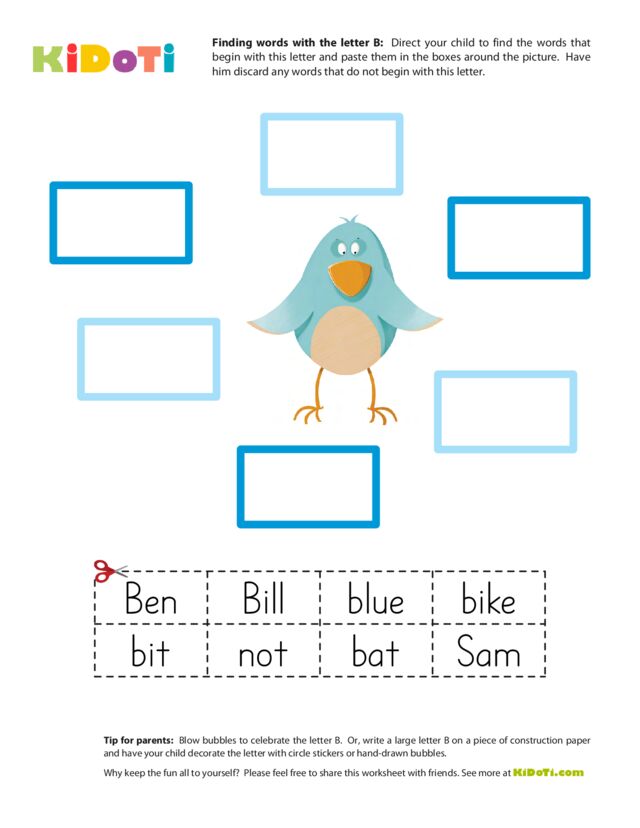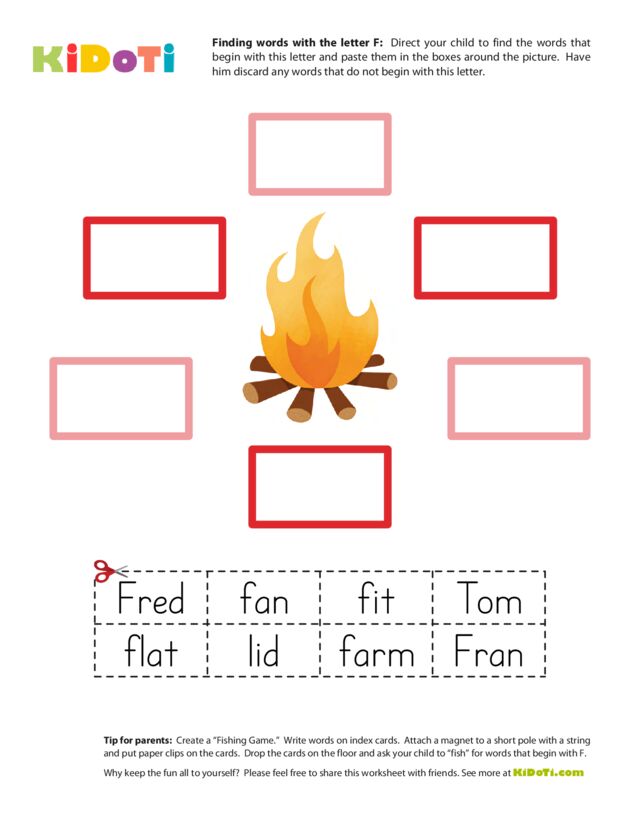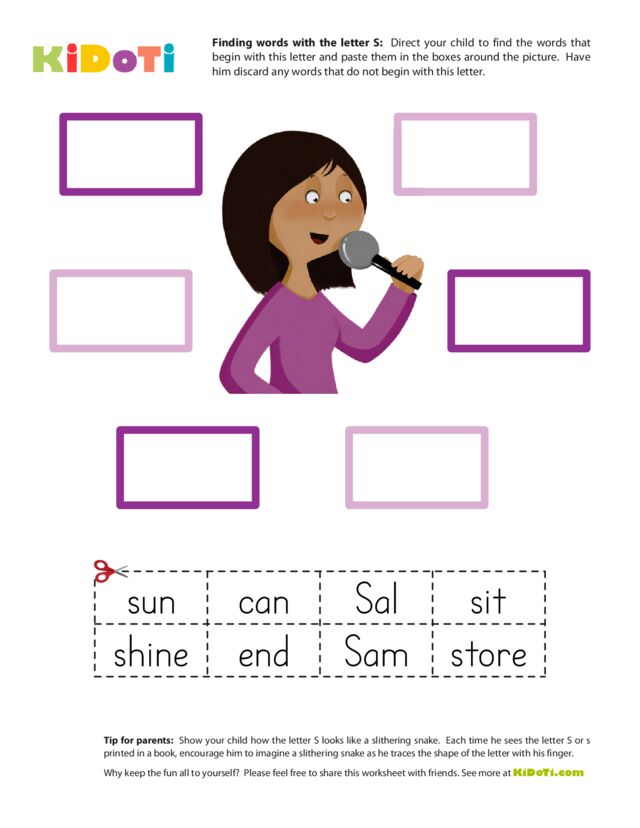After your child is able to identify each letter when written individually, these worksheets will challenge your child to identify each letter when written as part of a word. Once your child is able to identify individual letters within words and has learned each letter’s sound, he will be ready to start “sounding out” words, which is an important pre-reading skill.
The importance of letter recognition
The first step of letter recognition is being able to identify each letter when it is printed individually. Once your child is comfortable identifying both the uppercase and lowercase versions of a letter, he can progress to the more challenging task of identifying letters when printed in words.
The goal of the above letter recognition worksheets is for your child to become accustomed to recognizing letters when they are printed as part of a longer word. It is easiest for children to complete letter recognition activities when the featured letter is the first letter of the word, so these worksheets focus on that basic activity.
Tips for using the letter recognition worksheets
When first beginning a letter recognition worksheet, take time to discuss the picture on the worksheet with your child. Say aloud the picture’s name and name the initial letter of the word. Ask your child to repeat the name of that letter so you are sure he understands what letter is being featured on the worksheet. If necessary, you can write the name of the picture somewhere on the worksheet, so your child can refer to it as he completes the letter recognition activity.
Before cutting apart the rectangles at the bottom of the page, ask your child to move his finger across each row, stopping to point to and name the featured letter each time he recognizes it, which may be once, twice, or zero times in each word. You can also read the word aloud for your child, although the focus of these worksheets is letter recognition, not matching the featured letter to the sound it makes or reading entire words.
If your child is able to cut along the dashed lines and cut out the rectangles without cutting the words, you can encourage him to do that. But since this is not a cutting exercise, and the words within each rectangle are important, it may be easiest for a parent to cut the words apart.
When all of the words are cut out, hand your child one word at a time and ask him to decide if that word begins with the featured letter. If he believes the word does begin with the featured letter, ask him to place the word in a colored rectangle on the page. If he does not recognize the featured letter in the word, he can set that word aside. There are only as many rectangles on the page as there are words that begin with the featured letter so your child will realize he made a mistake if, after going through all the words, he either has an empty rectangle on the worksheet without a word in it or not enough rectangles on the worksheet for all the words he selected.
After your child has reviewing all eight words and placed the correct words in the colored rectangles, he can paste down the words to create a finished worksheet.




